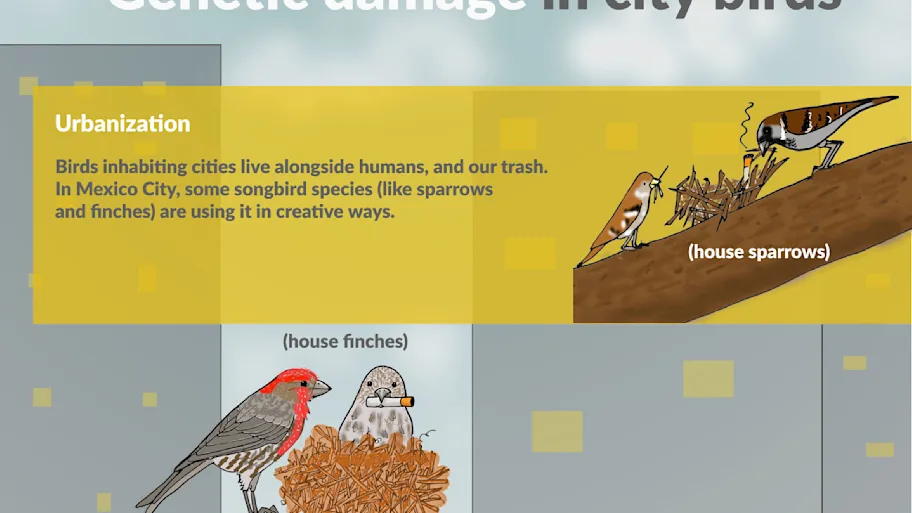
- Science News
- Featured news
- In the battle of cats vs. rats, the rats are winning
In the battle of cats vs. rats, the rats are winning

Although people have long associated cats as the natural enemy of rats, researchers say cats prefer smaller, defenseless prey such as birds and smaller native wildlife.
The first study to document interactions between feral cats and a wild rat colony finds that contrary to popular opinion, cats are not good predators of rats. In a novel approach, researchers monitored the behavior and movement of microchipped rats in the presence of cats living in the same area. They show the rats actively avoided the cats, and only recorded two rat kills in 79 days. Published as part of a special “rodent issue” in Frontiers in Ecology and Evolution, the findings add to growing evidence that any benefit of using cats to control city rats is outweighed by the threat they pose to birds and other wildlife living in urban areas.
► Read original article ► Download original article (pdf)
“Like any prey, rats overestimate the risks of predation. In the presence of cats, they adjust their behavior to make themselves less apparent and spend more time in burrows,” says the study’s lead researcher Dr. Michael H. Parsons, a visiting scholar at Fordham University. “This raises questions about whether releasing cats in the city to control rats is worth the risks cats pose to wildlife.”
People have long associated cats as the natural enemy of rats. However Australian and US researchers say cats prefer smaller, defenseless prey such as birds and smaller native wildlife — which makes cats a threat to urban ecosystems.
“New Yorkers often boast their rats ‘aren’t afraid of anything’ and are the ‘size of a cat’,” says Parsons. “Yet cats are commonly released to control this relatively large, defensive and potentially dangerous prey.”
“Until now, no one has provided good data on the number of city rats killed by cats,” adds co-author Michael A. Deutsch, from Arrow Exterminating Company Inc. “But the data have been very clear as to the effect of cats on native wildlife.”
When feral cats invaded a New York City waste recycling center, the researchers took the opportunity to correct the record. Their team was already studying a colony of more than 100 rats living inside the center, by microchipping and releasing the animals to study their life history. When the cats entered the research area, they set up motion-capture video cameras to quantify the effect of the cats on the rats — the first time this has been studied in a natural setting.
“We wanted to know whether the number of cats present would influence the number of rats observed, and vice versa,” says Parsons. “We were also interested whether the presence of cats had any effect on eight common rat behaviors or their direction of movement.”
Related: Birds avoid crossing roads to prevent predation
The researchers examined 306 videos taken over 79 days. Although up to three cats were active beside the rat colony each day, only 20 stalking events, three kill attempts and two successful kills were recorded in this time. Both kills took place when cats found rats in hiding; the third attempt was an open-floor chase where the cat lost interest.
The videos also revealed that in the presence of cats, the rats spent less time in the open and more time moving to shelter.
“The presence of cats resulted in fewer rat sightings on the same or following day, while the presence of humans did not affect rat sightings,” says Parsons. In contrast, the number of rats seen on a given day did not predict the number of cats seen on the following day.
“We already knew the average weight of the rats was 330 g, much more than a typical 15 g bird or 30 g mouse,” says Parsons. “As such, we expected a low predation rate on the rats — and our study confirmed this.”
“We are not saying that cats will not predate city rats, only that conditions must be right for it to happen,” adds Deutsch. “The cat must be hungry, have no alternative less-risky food source, and usually needs the element of surprise.”
The findings could explain why people continue to release cats as “natural” rat control tools. “People see fewer rats and assume it’s because the cats have killed them — whereas it’s actually due to the rats changing their behavior,” says Parsons.
“The results of our study suggest the benefits of releasing cats are far outweighed by the risks to wildlife,” he adds.
The research team plans to continue collecting data as part of their long-term study and will update their findings as new information becomes available.
“Much more research is needed to better understand the city rat problem, we hope our successes will compel others to perform similar studies in other venues,” says Parsons.
But for now, in the battle of New York City cats and rats it appears the rats are winning.
Original article: Temporal and Space-Use Changes by Rats in Response to Predation by Feral Cats in an Urban Ecosystem
REPUBLISHING GUIDELINES: Open access and sharing research is part of Frontiers’ mission. Unless otherwise noted, you can republish articles posted in the Frontiers news blog — as long as you include a link back to the original research. Selling the articles is not allowed.






